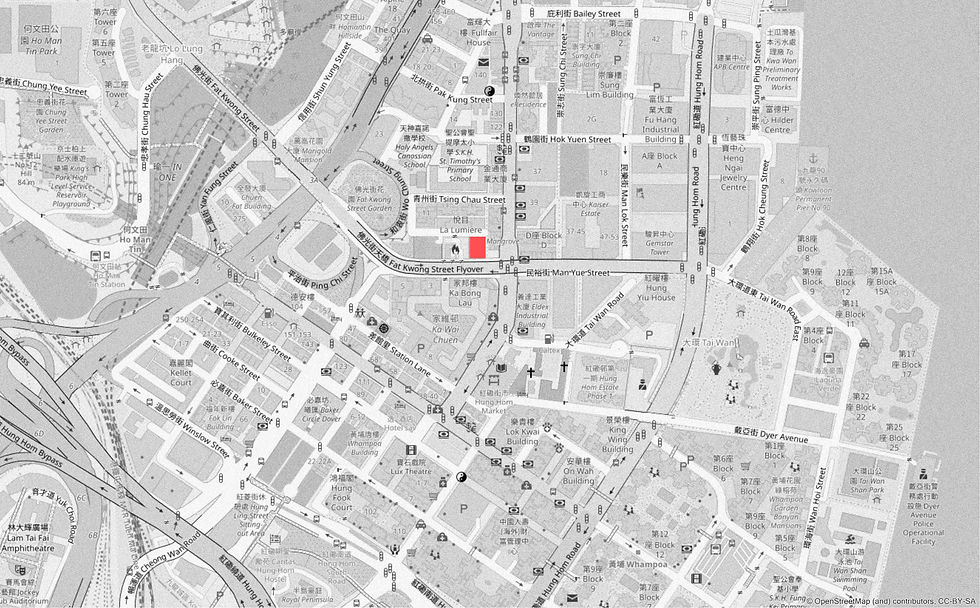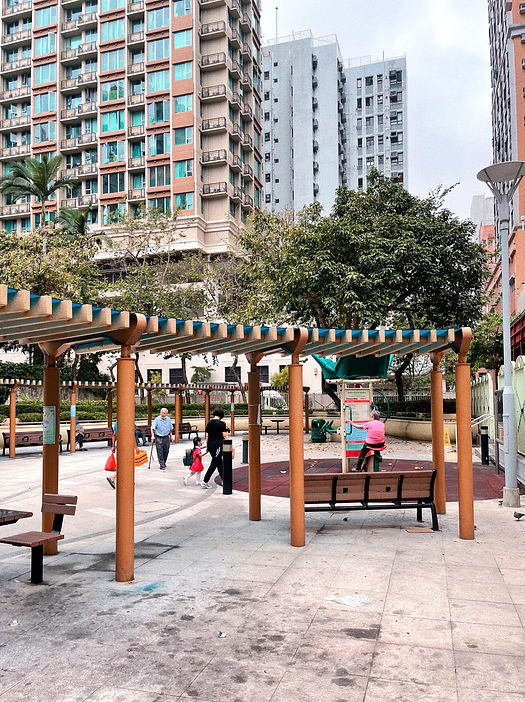
021
位置圖 Location
佛 光 街 休 憩 處
Fat Kwong Street Sitting-out Area
紅磡的傳說常常與觀音廟有關。紅磡觀音廟最早建於1873年,三面環山,觀音廟所背靠的後山則為觀音山。1950年代中,為解決紅磡船塢和水泥廠的職工居住問題,政府建設紅磡邨及其徙置區,觀音山被夷平,其土方用於紅磡灣填海。及後,一條東西走向,從何文田十二號山引申至紅磡,橫跨觀音山,貫穿九龍城區南部的交通幹道建成,命名為佛光街。佛光街休憩處位於天橋的北側,公園的佈置較為簡單,有一組彎曲線型的涼亭置中,並設有長者健身器械伴其左右,貼近紅磡消防局的一側為洋紫荊樹的種植池,為消防員宿舍區隔周邊的噪音。
Hung Hom’s legends are often tied to its Kwun Yam Temple. The temple was first built in 1873 and is surrounded by mountains on three sides. The mountain behind the temple is Kwun Yam Shan. In the mid-1950s, the government built Hung Hom Estate and its resettlement area to solve the housing problem of workers in the Hung Hom Dock and cement mills. Kwun Yam Shan was levelled as a borrow area for reclamation in Hung Hom Bay. Soon after, an east–west arterial road named Fat Kwong Street was constructed. It extends from Ho Man Tin No. 12 Hill to Hung Hom, across Kwun Yam Shan and through southern Kowloon City. The Fat Kwong Street Sitting-out Area is north of the flyover. It has a relatively simple layout, with pavilions centred along a curve and elderly fitness equipment on its sides. Near the Hung Hom Fire Station is also a Bauhinia x blakeana planting bed, which acts as a noise barrier for the firefighters’ quarters.

剖面圖 Section

軸測圖 Axonometric








